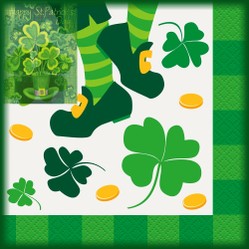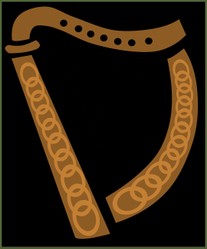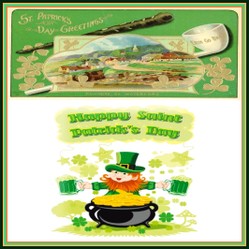When you look around on this beautiful event of Saint Patrick’s Day, you find that the world has turned green. While it is appreciated that your every small step in order to save this planet and environmental friendly act is helping the world in some way to stay green, it is interesting to know why this festival was chosen to be celebrated in the green colour from the spectrum of light and not any other from the rainbow of seven key colours.
As the Irish say in Ireland -
"Lá Fhéile Phádraig Shona"
"Happy St. Patrick’s Day"
Image from Amazon.com
© copyright WriterArtist 2015, All rights reserved



















 Harvest Bounty of Fall Fruitson 08/03/2023
Harvest Bounty of Fall Fruitson 08/03/2023
 Is Buddhism older than Hinduism?on 06/13/2023
Is Buddhism older than Hinduism?on 06/13/2023
 Was Tirumala Tirupati Balaji Temple a Buddhist Shrine?on 06/13/2023
Was Tirumala Tirupati Balaji Temple a Buddhist Shrine?on 06/13/2023
 The Great Wave of Kanagawa from Japanese Artist Hokusaion 06/11/2023
The Great Wave of Kanagawa from Japanese Artist Hokusaion 06/11/2023



Do you like the colour of shamrock green for Saint Patrick's Day?
WriterArtist, Thank you for practical information, pretty pictures and product lines.
In particular, I admire the Celtic-knot plate, the Irish blessings and the shamrock-patterned glass candle holder.
The latter brings up a concern that I have about keeping my china-, glass- and silver-ware shining like the day that I bought them. How would I tackle possible smoke stains on the candle holder?
Yes, the claim that he was Scottish came from a man who was a great scholar of Ireland, but who knew less about Britain.
Scholars think that they can identify the area where Patrick was kept as a slave, which was near the wood of Fioch. The wood does not exist now, but the area was probably in the north west of Mayo, a county in North West Ireland. If you look at a map you will find the coastal town of Ballina. Look east of Ballina and you will see a coastal village called Belmullet. The wood of Fioch was somewhere in between these. As an area on the Atlantic coast it is windy and wet and often cold. Herding pigs near there, as Patrick did, was therefore not an easy or comfortable task.
One piece of information for you. The Irish for Patrick is Padraig, which is pronounced Porig, as the Gaelic language does not pronounce ts an ds in the middle of a word.
Don't be surprised at raiding in the British Isles, The whole area was a patchwork of feuding kingdoms at one time. There used to be a proverb, "There are three things that last, the pride of France, the treachery of England, and the war in Ireland." The last of these three seems to have finished. I shall leave it to your judgment what you think of the other two.
@frankbeswick - That's lot of historical information. I am reading St. Patrick's story as I am curious to know his origins and the reason this day is celebrated. Below mentioned information is quite new to me that he could be Welsh and that Irish used to raid in ancient days.
One fact about Patrick is that he is regarded as a saint by not only the Catholic Church, but by the Orthodox Church, as he became a recognized saint before the split between the two churches.
Secondly, there are issues about where he came from. Some mistakenly say southern Scotland, but I think this erroneous for the following reason. His father was a decurion in the Roman civil administration of Britain, but there was no Roman civil administration in Southern Scotland, for Roman authority there was military and it had faded there by the time that Patrick was born. I think that he came from South West England, probably Gloucestershire or Somerset, where civil structures survived. But be clear: he was not English, but British [Welsh] as the English tribes had not settled in England when Patrick was born. We know that the Irish were raiding in Southern Britain and Northern Gaul [France] at that period, for these rich areas were worth raiding.
@ologsinquito - All Saints are benevolent in nature, they are epitome of generosity and well ahead of their time. He was one of the saints who was instrumental in spreading values and humanity in the country of Ireland.
St. Patrick is one of my favorite Catholic saints. I believe he has a very special place in Heaven, because he showed such great love for the Irish people.